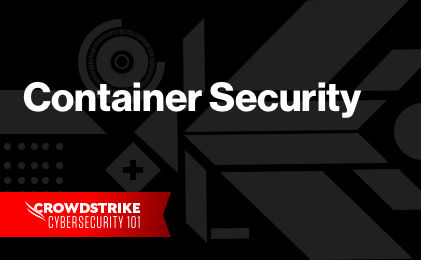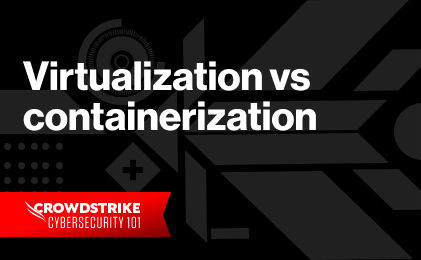A hypervisor, or virtual machine monitor (VMM), is virtualization software that creates and manages multiple virtual machines (VMs) from a single physical host machine.
Acting as a VMM, the hypervisor monitors, pools and allocates resources — like CPU, memory and storage — across all guest VMs. By centralizing these assets, it’s possible to significantly reduce each VM's energy consumption, space allocation and maintenance requirements while optimizing overall system performance.
Why should you use a hypervisor?
In addition to helping the IT team better monitor and utilize all available resources, a hypervisor unlocks a wide range of benefits. These include:
- Speed and scalability: Hypervisors can create new VMs instantly, which allows organizations to quickly scale to meet changing business needs. In the event an application needs more processing power, the hypervisor can also access additional machines on a different server to address this demand.
- Cost and energy efficiency: Using a hypervisor to create and run several VMs from a common host is far more cost- and energy-efficient than running several physical machines to complete the same tasks.
- Flexibility: A hypervisor separates the OS from underlying physical hardware. As a result, the guest VM can run a variety of software and applications since the system does not rely on specific hardware.
- Mobility and resiliency: Hypervisors logically isolate VMs from the host hardware. VMs can therefore be moved freely from one server to another without risk of disruption. Hypervisors can also isolate one guest virtual machine from another; this eliminates the risk of a “domino effect” if one virtual machine crashes.
- Replication: Replicating a VM manually is a time-intensive and potentially complex process. Hypervisors automate the replication process for VMs, allowing staff to focus on more high-value tasks.
- Restoration: A hypervisor has built-in stability and security features, including the ability to take a snapshot of a VM's current state. Once this snapshot is taken, the VM can revert to this state if needed. This is particularly useful when carrying out system upgrades or maintenance as the VM can be restored to its previous functioning state if the IT team encounters an error.
Types of hypervisors
There are two main types of hypervisors:
- Type 1 hypervisor: Native or bare metal hypervisor
- Type 2 hypervisor: Hosted or embedded hypervisor
Type 1 hypervisor: native or bare metal hypervisor
A type 1 hypervisor installs virtualization software directly on the hardware, hence the name bare metal hypervisor.
In this model, the hypervisor takes the place of the OS. As a result, these hypervisors are typically faster since all computing power can be dedicated to guest virtual machines, as well as more secure since adversaries cannot target vulnerabilities within the OS.
That said, a native hypervisor tends to be more complex to set up and operate. Further, a type 1 hypervisor has somewhat limited functionality since the hypervisor itself basically serves as an OS.
Type 2 hypervisor: hosted or embedded hypervisor
Unlike bare-metal hypervisors, a hosted hypervisor is deployed as an added software layer on top of the host operating system. Multiple operating systems can then be installed as a new layer on top of the host OS.
In this model, the OS acts as a weigh station between the hardware and hypervisor. As a result, a type 2 hypervisor tends to have higher latency and slower performance. The presence of the OS also makes this type more vulnerable to cyberattacks.
Embedded hypervisors are generally more convenient to build and launch than a Type 1 hypervisor since they do not require a management console or dedicated machine to set up and oversee the VMs. A hosted hypervisor may also be a good choice for use cases where latency is not a concern, such as software testing.
Cloud hypervisors
The shift to the cloud and cloud computing is prompting the need for cloud hypervisors. The cloud hypervisor focuses exclusively on running VMs in a cloud environment (rather than on physical devices).
Due to the cloud's flexibility, speed and cost savings, businesses are increasingly migrating their VMs to the cloud. A cloud hypervisor can provide the tools to migrate them more efficiently, allowing companies to make a faster return on investment on their transformation efforts.
Differences between containers and hypervisors
Containers and hypervisors both ensure applications run more efficiently by logically isolating them within the system. However, there are significant differences between how the two are structured, how they scale and their respective use cases.
A container is a package of only software and its dependencies, such as code, system tools, settings and libraries. It can run reliably on any operating system and infrastructure. A container consists of an entire runtime environment, enabling applications to move between a variety of computing environments, such as from a physical machine to the cloud, or from a developer’s test environment to staging and then production.
Hypervisors vs Containers
Hypervisors host one or more VMs that mimic a collection of physical machines. Each VM has its own independent OS and is effectively isolated from others.
While VMs are larger and generally slower compared to containers, they can run several applications and different operating systems simultaneously. This makes them a good solution for organizations that need to run multiple applications or legacy software that requires an outdated OS.
Containers, on the other hand, often share an OS kernel or base image. While each container can run individual applications or microservices, it is still linked to the underlying kernel or base image.
Containers are typically used to host a single app or microservice without any other overhead. This makes them more lightweight and flexible than VMs. As such, they are often used for tasks that require a high level of scalability, portability and speed, such as application development.
Understanding hypervisor security
On one hand, by isolating VMs from one another, a hypervisor effectively contains attacks on an individual VM. Also, in the case of type 1 or bare metal hypervisors, the absence of an operating system significantly reduces the risk of an attack since adversaries cannot exploit vulnerabilities within the OS.
At the same time, the hypervisor host itself can be subject to an attack. In that case, each guest machine and their associated data could be vulnerable to a breach.
Best practices for improving hypervisor security
Here are some best practices to consider when integrating a hypervisor within the organization’s IT architecture:
- Minimize the attack surface by limiting a host’s role to only operating VMs
- Conduct regular and timely patching for all software applications and the OS
- Leverage other security measures, such as encryption, zero trust and multi-factor authentication (MFA) to ensure user credentials remain secure
- Limit administrative privileges and the number of users in the system
- Incorporate the hypervisor within the organization’s cybersecurity architecture for maximum protection
Hypervisors and log management
With the growth of microservices and migration to disparate cloud environments, maintaining observability has become increasingly difficult. Additionally, challenges such as application availability, bugs/vulnerabilities, resource use and changes to performance in virtual machines/containers that affect end-user experience continues to affect the community. Organizations operating with a continuous delivery model are further troubled with capturing and understanding the dependencies within the application environment.
Log Everything, Answer Anything – For Free
Falcon LogScale Community Edition (previously Humio) offers a free modern log management platform for the cloud. Leverage streaming data ingestion to achieve instant visibility across distributed systems and prevent and resolve incidents.
Falcon LogScale Community Edition, available instantly at no cost, includes the following:
- Ingest up to 16GB per day
- 7-day retention
- No credit card required
- Ongoing access with no trial period
- Index-free logging, real-time alerts and live dashboards
- Access our marketplace and packages, including guides to build new packages
- Learn and collaborate with an active community
"







